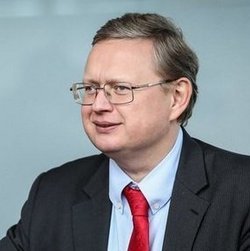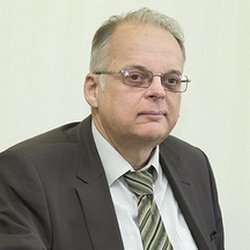'According to competent foreign estimates, Russia is going through this crisis better than many states'
Covering the budget deficit of Russia with the money of the National Welfare Fund did not prevent it from almost doubling to 13,55 trillion rubles
In the context of the coronavirus pandemic last year, Russia began spending money from the National Welfare Fund to cover the budget deficit — the country's reserve has not been used for such purposes since 2017. Starting from the first tranche in August and to December, 290 billion rubles were allocated to the treasury. However, the Russian National Wealth Fund not only “did not lose weight”, but also increased its volume by 74%. Chinese yuan and Japanese yen appeared in it for the first time in the fund's existence, while the US currency and the euro became less. Read the details in the material of Realnoe Vremya.
The fund was printed out to cover the budget deficit
The National Welfare Fund (NWF) is a Russian state reserve fund, part of the pension provision mechanism for Russian citizens. The goals of the fund are to provide co-financing of voluntary pension savings of Russians and to ensure a balance between the federal budget and the budget of the Pension Fund of Russia. The amount of the fund's funds allocated for these purposes is established by the federal bill on the federal budget for the next year and the planning period. Simply put, the National Welfare Fund is a “safety cushion” of the country, which compensates for the loss of oil and gas revenues in the event of a sharp decline in the price of oil and fulfill all the social obligations assumed.
In the context of the coronavirus pandemic last year, the fund was opened for the first time in four years to cover the budget deficit. However, the volume of the NWF over the past year not only did not sink, but also increased by 74,3% — from 7,77 trillion to 13,55 trillion rubles.
Last March, the NWF received 3,35 trillion rubles — the only transfers to the fund last year, according to statistics. The fund's funds were spent much more often. The first time — in April — 3,69 billion rubles, then in July — a little more than a million, but this money was spent on co-financing the formation of pension savings. But in August, the Russian Finance Ministry used 3,56 billion rubles for the first time since 2017 to finance the budget deficit.
In September, part of the NWF funds in the Bank of Russia accounts in the amount of $340,4 million dollars, 288,3 million euros, and 58,1 million pound sterling was sold for 57,2 billion rubles, and the proceeds were credited to the single account of the Russian treasury to finance its deficit. In October, they spent 110,33 billion rubles, in November — 66,44 billion rubles, in December — 52,32 billion rubles. In total, from August to December, 289,85 billion rubles were transferred to the treasury.
Andrey Movchan, a Russian economist, financier, expert of the programme 'Economic Policy', considers it quite appropriate to use the NWF for such purposes:

Andrey Margolin, the vice-rector, director of the Institute of Finance and Sustainable Development (IFSD) of the Russian Academy of Sciences, Doctor of Economics, noted that there is no consensus among Russian economists on the distribution of the volume and types of support to the economy during the pandemic:
“But if we look at the results and see that, in general, not only according to our own, but also according to competent foreign assessments, Russia is going through this crisis better than many states, then, probably, we can at least say that everything has been done quite well," Margolin believes.
Some details of the spending of the NWF funds to finance the budget deficit at the end of the year were revealed by President Vladimir Putin. Part of the funds, according to him, was directed to social spending: “Payments to citizens, families with children, payments to doctors, payments to students of medical universities and colleges, this is support for the affected sectors of the economy, support for large enterprises.” Another part of the funds was spent “on the development of the so-called 'Eastern Polygon', 60 billion rubles were allocated for the development of the Trans-Siberian Railway and the Baikal–Amur Mainline”.
But Mikhail Delyagin, an economist, politician and publicist, the director of the Institute for Globalisation Problems, considers the very continuation of the National Welfare Fund a “crime”, because over the past year it has increased dramatically in volume:

How NWF earns, or 26% per annum
Last year, the profitability of the allocated funds of the National Welfare Fund depended on a number of factors:
- total return on foreign currency accounts with the Bank of Russia: — yield expressed in a basket of foreign currencies, — 1,02%; — yield expressed in Russian rubles — 26,08%.
- funds on deposits with VEB in Russian rubles — 4,04%;
- investments in securities of Russian issuers related to the implementation of self-supporting infrastructure projects, the list of which is approved by the government: — in preferred shares of non-financial organisations — 2,61%— — in bonds denominated in Russian rubles — 4,79%;— in bonds denominated in US dollars — 3,71%;
- investments in preferred shares of credit institutions — 3,06%;
- funds on deposits in VTB Bank and Gazprombank for the purpose of financing self-supporting infrastructure projects, the list of which is approved by the government — 4,36%;
- investments in ordinary shares of Sberbank — 9,87%.
Currency structure of NWF's funds and new application
The currencies of China and Japan have appeared in its structure for the first time since the creation of the NWF. In February 2021, the Japanese yen with a 5% share and the Chinese yuan with a 15% share were added to the fund to increase profitability and diversify investment risks. The shares of the US dollar and the euro were reduced from 45% to 35%, while the share of the pound sterling remained unchanged at 10%.
To bring the actual currency structure of the Fund to the new regulatory currency structure, 2,85 billion dollars, 2,36 billion euros and 68,2 million rubles were converted into 600,30 billion Japanese yens, and the funds in the amount of 8,56 billion dollars 7,08 billion euros and 204,5 million rubles — into 110,54 billion Chinese yuans.
This spring, the Fund's money found another new use. On March 11, following a meeting on measures to stimulate investment activity, Vladimir Putin instructed the government to submit a list of infrastructure projects that would be financed with the help of the National Welfare Fund by May 1:
“To develop with the participation of the joint-stock company 'Management Company of the Russian Direct Investment Fund' and submit a list of infrastructure projects, the financing of which will be carried out with the involvement of the National Welfare Fund," the order published on the Kremlin's website says.
However, in this case, Andrey Movchan is afraid of irrational spending:
“In many respects, the economic actions of the government are controlled by large lobbyists, whose interests, in my opinion, do not coincide with the interests of the country's economy. I would like to see the National Welfare Fund focused on global markets, on investment securities of other countries, as other major players do: Norway, the United Arab Emirates, and so on.
In his opinion, the Russian economy is weak and investing in a weak economy, in megaprojects, is not very profitable: “The NWF should still serve as a 'safety cushion'. It should grow, provide solutions to the problems that arise, and not be a catalyst for economic development.” Attracted investments, preferably external ones, should be the catalyst for economic development, he believes: “Therefore, in my opinion, this is the wrong decision, but then, of course, we will have to look at what exactly will be financed," Andrey Movchan summed up.

“The pandemic has weakened business opportunities, and the role of the state will obviously increase during this crisis period. Therefore, the support of such projects from the NWF is very important," Margolin concluded.